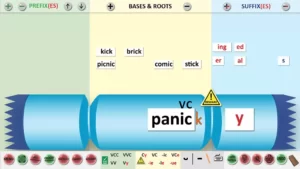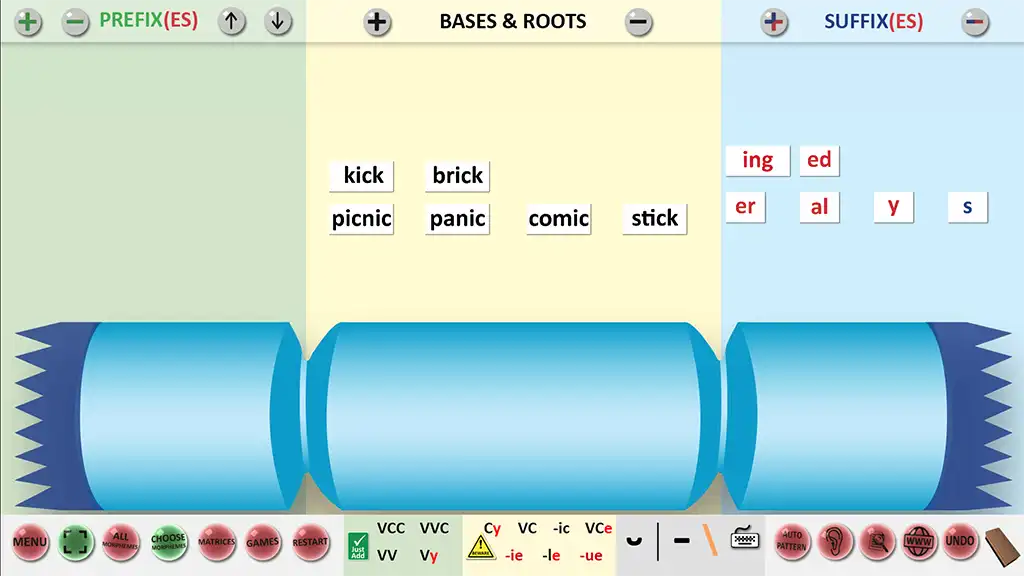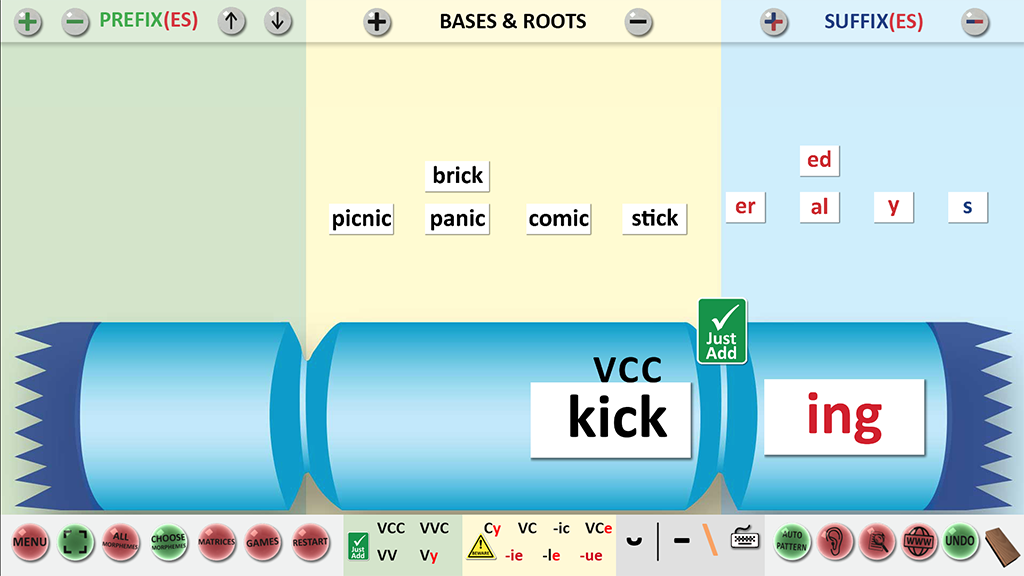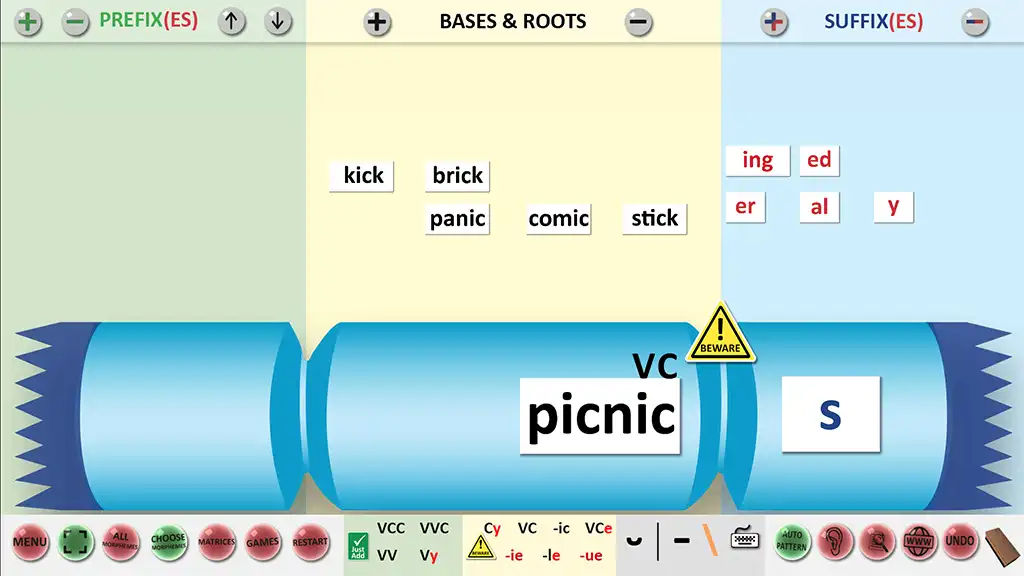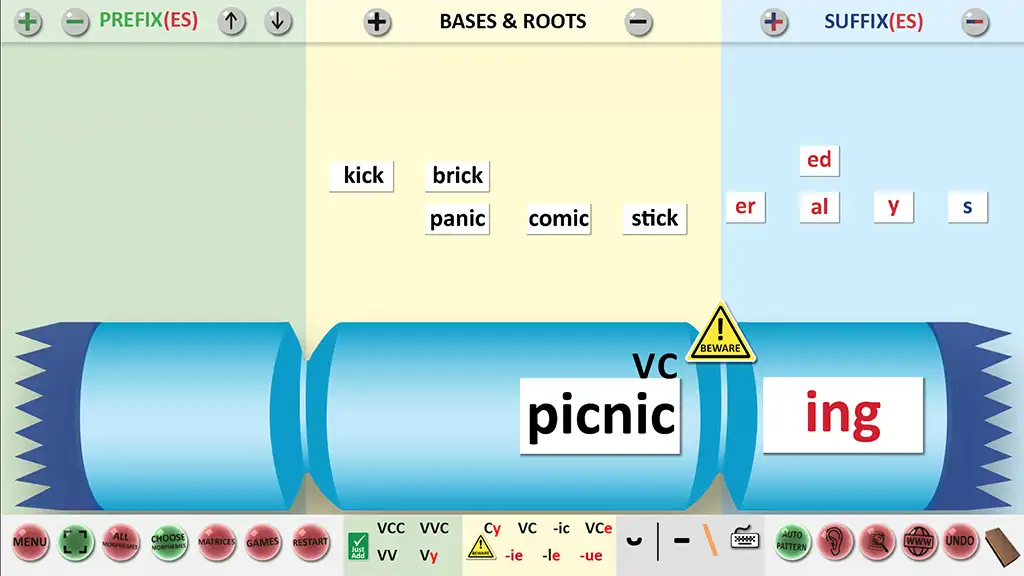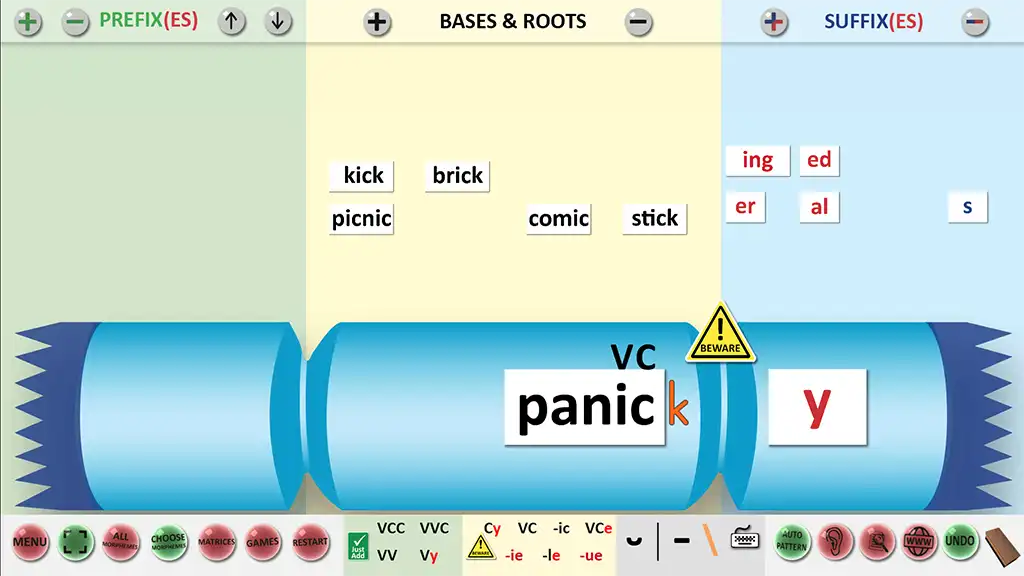This is a tricky spelling rule because you need to be familiar with a number of rules for it to make sense.
When words end with -ic, and we add a vowel suffix that begins with e, i or y, we need to add a k. e.g. panic+ing becomes panicking.
Preceding this, we recommend kids are fluent with these rules.
- We use ‘ck’ to spell the /k/ sound after a short vowel at the end of a one-syllable word.
- We use ‘ic’ to spell the /ik/ sound at the end of a two or more-syllable word.
- We use ‘k’ to spell the /k/ sound before ‘e’, ‘i’, or ‘y’.
- We use ‘k’ to spell /k/ after a consonant, and we use ‘c’ to spell /k/ before a consonant.
- ‘c’ makes the soft /s/ sound before ‘e’, ‘i’, or ‘y’.
Using The Word Cracker to teach this rule
Step 3
You could then ask the student, “What if I was having a picnic right now? What suffix would you add to describe that?” Hopefully, they can say the suffix ‘ing’ or ‘picnicking’. I would make it on the cracker and say, hold on, what’s the problem with this?
If the student is familiar enough with the rule that ‘c’ makes its soft /s/ sound before ‘e’, ‘i’ or ‘y’, they would realise that this word now says ‘picni/s/ing’.
Step 4
I would ask the student if they can suggest how we might fix this. We would discuss it, and if they didn’t make the connection, I would remind them of the ‘k before e, i or y’ rule. Eventually, we would conclude that we need to add a ‘k’ to stop the ‘c’ from making the /s/ sound.
Use the coding tool text to add a ‘k’ on the Word Cracker.
Go through a similar process with the other ‘e’, ‘i’, and ‘y’ suffixes and discuss and make the new words.
Make sure you talk through the ‘panicky’ example because this is a common spelling mistake. Students know something is wrong but are unsure how to fix it. They often add an ‘e’ to make ‘panickey’ or change the ‘c’ to a ‘k’ as in ‘paniky’.
Step 5
You need to use your judgement as to when you introduce this step. For some Tier 3 students, this would be too much for one lesson, and this step could be done in a follow-up lesson.
Now, ask the student what suffix you might add to ‘comic’ to make it into an adjective or to describe something funny. Hopefully, they can spot the suffix ‘al’.
Add the suffix ‘al’ to the base word and ask them if they think we need to add a ‘k’ to the end of ‘comic’ with this vowel suffix. Talk it through and help them realise that because this vowel suffix starts with an ‘a’, we can keep the ‘c’ because ‘c’ makes the /k/ sound before ‘a’, ‘o’, and ‘u’.
-ic ick game
Word Cracker game – ‘ick’ or ‘ic’ plus suffix.
- Set up student whiteboards with the top line being for ‘-ick’ plus suffix words and the bottom line being for ‘-ic’ words plus suffix.
- Teacher prepares a deck of cards.
- Teacher calls out a word for the first student, and the student decides whether it is an ‘-ick’ + suffix or ‘-ic’ + suffix. The student then writes the word on the top line [-ick words] or the bottom line [-ic words].
- Student must remember to apply the suffix rule when adding to ‘-ic’ words.
- Teacher repeats the process with the second student.
- The first student to complete the board is the winner.
Rule reminders:
- ‘-ick’ words are 1 syllable, ‘-ic’ more than one syllable.
- When adding a vowel suffix to ‘-ic’ words, add a ‘k’ if the suffix begins with ‘i’, ‘e’, or ‘y’. This stops the ‘c’ from becoming a ‘s’ sound.

